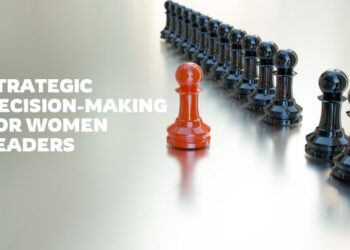Making decisions is a critical part of being a businesswoman. Every day brings choices that can impact your career, team, and organization. But how can you ensure that your decisions are well-informed and effective? Using structured decision-making frameworks can help. These frameworks provide clarity and direction, enabling you to make confident choices. Let’s explore some effective decision-making frameworks tailored for businesswomen.
Understanding Decision-Making Frameworks
A decision-making framework is a structured approach to making choices. It helps clarify your options, weigh the pros and cons, and identify the best action. By following a framework, you can reduce uncertainty and make informed decisions.
The SWOT Analysis
One of the most popular frameworks is the SWOT analysis. SWOT stands for Strengths, Weaknesses, Opportunities, and Threats. This framework helps you evaluate both internal and external factors affecting your decision.
How to Conduct a SWOT Analysis
- Identify Strengths: What advantages do you or your business have? Consider skills, resources, and unique capabilities.
- Recognize Weaknesses: What areas need improvement? Be honest about limitations that could impact your decision.
- Explore Opportunities: What external factors could benefit you? Look for market trends, partnerships, or changes in consumer behaviour.
- Assess Threats: What challenges could hinder your progress? Identify competitors, economic conditions, or other risks.
The DECIDE Model
The DECIDE model is another effective framework. Its steps are define, Establish, Consider, Identify, Decide, and Evaluate. This model guides you through a systematic decision-making process.
- Define the Problem: Clearly articulate the issue you need to resolve.
- Establish Criteria: Determine what factors are important in making your decision. This might include cost, time, and alignment with goals.
- Consider Alternatives: Brainstorm possible solutions or options. Aim for creativity, and don’t limit yourself initially.
- Identify the Best Option: Evaluate each alternative against your criteria. What option stands out?
- Decide and Implement: Choose the best alternative and put it into action.
- Evaluate the Decision: After implementation, assess the outcome. What worked well? What could be improved?
The Pareto Principle (80/20 Rule)
The Pareto Principle often called the 80/20 rule, suggests that 80% of outcomes result from 20% of causes. This framework helps prioritize your efforts for maximum impact.
How to Use the Pareto Principle
- Identify Key Factors: Determine which tasks or decisions yield the most significant results.
- Focus on High-Impact Areas: Direct your energy towards these areas. This might mean prioritizing high-value clients or crucial projects.
- Eliminate the Noise: Reduce time spent on low-impact tasks and learn to say no to distractions that don’t align with your main goals.
The Cost-Benefit Analysis
A cost-benefit analysis is a straightforward framework for weighing the costs against the benefits of a decision. It is particularly useful for financial decisions.
Steps for Conducting a Cost-Benefit Analysis
- List Costs: Identify all potential costs associated with your decision. Include both direct and indirect costs.
- List Benefits: Next, outline all the expected benefits. Be as specific as possible.
- Compare Costs and Benefits: Evaluate whether the benefits outweigh the costs. This comparison should guide your decision.
- Make a Decision: If the benefits significantly exceed the costs, it may be worth proceeding.
The Five Whys
The Five Whys is a simple yet effective framework for identifying the root cause of a problem. It encourages asking “why” multiple times until you uncover the underlying issue.
- Identify the Problem: Start with a clear statement of the issue.
- Ask Why: Ask why the problem exists.
- Repeat: For each answer, ask “why” again. Do this five times or until you reach the root cause.
- Develop Solutions: Once you identify the root cause, brainstorm potential solutions.
Conclusion
Decision-making frameworks can empower businesswomen to make informed choices. Using tools like SWOT analysis, the DECIDE model, the Pareto Principle, cost-benefit analysis, and the Five Whys, you can confidently navigate the complexities of business. As you apply these frameworks, you’ll likely find your decision-making process becomes clearer and more effective. Embrace the journey, trust your instincts, and watch your confidence grow.





